Showing Spotlights 33 - 40 of 80 in category All (newest first):
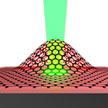 Most nanomotors designs are powered by quantum or, in most cases, catalytic chemical processes, the nanoscale equivalent of conventional internal heat engines that are so prevalent in our daily life has been missing. Researchers have now suggested a new type of ultrathin graphene engine which mimics an internal combustion engine system. This graphene engine consists of only a few parts - functionalized graphene, laser light, and substrate, which would make it simple to work with.
Most nanomotors designs are powered by quantum or, in most cases, catalytic chemical processes, the nanoscale equivalent of conventional internal heat engines that are so prevalent in our daily life has been missing. Researchers have now suggested a new type of ultrathin graphene engine which mimics an internal combustion engine system. This graphene engine consists of only a few parts - functionalized graphene, laser light, and substrate, which would make it simple to work with.
May 16th, 2014
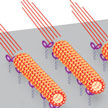 Over the past few years, researchers have demonstrated that microtubules driven by kinesin make flexible, responsive and effective molecular shuttles for nanotransport applications. In order to fully control microtubules driven by kinesin it has to be possible to switch them on, switch them off, and regulate the speed and direction of their movements - achievements that until now researchers have't fully attained yet. Now, though, it has become possible, for the first time, to achieve complete control over on/off switching of the movement of a nanomachine.
Over the past few years, researchers have demonstrated that microtubules driven by kinesin make flexible, responsive and effective molecular shuttles for nanotransport applications. In order to fully control microtubules driven by kinesin it has to be possible to switch them on, switch them off, and regulate the speed and direction of their movements - achievements that until now researchers have't fully attained yet. Now, though, it has become possible, for the first time, to achieve complete control over on/off switching of the movement of a nanomachine.
Apr 14th, 2014
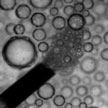 The construction of artificial micro- and nanomotors is a high priority in the nanotechnology field owing to their great potential for diverse potential applications, ranging from targeted drug delivery, on-chip diagnostics and biosensing, or pumping of fluids at the microscale to environmental remediation. In new work, researchers have now reported the first example of micromotors for the active degradation of organic pollutants in solution. The novelty of this work lies in the synergy between internal and external functionality of the micromotors.
The construction of artificial micro- and nanomotors is a high priority in the nanotechnology field owing to their great potential for diverse potential applications, ranging from targeted drug delivery, on-chip diagnostics and biosensing, or pumping of fluids at the microscale to environmental remediation. In new work, researchers have now reported the first example of micromotors for the active degradation of organic pollutants in solution. The novelty of this work lies in the synergy between internal and external functionality of the micromotors.
Dec 2nd, 2013
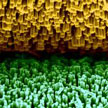 There is an almost infinite number of mechanical energy sources all around us - basically, anything that moves can be harvested for energy. These environmental energy sources can the very large, like wave power in the oceans, or very small, like rain drops or biomechanical energy from heart beat, breathing, and blood flow. With the increasing use of nanotechnology materials and applications in energy research, scientists are finding more and more ways to tap into these pretty much limitless sources of energy. Self-powered nanotechnology based on piezoelectric nanogenerators aims at powering nanodevices and nanosystems using the energy harvested from the environment in which these systems are suppose to operate.
There is an almost infinite number of mechanical energy sources all around us - basically, anything that moves can be harvested for energy. These environmental energy sources can the very large, like wave power in the oceans, or very small, like rain drops or biomechanical energy from heart beat, breathing, and blood flow. With the increasing use of nanotechnology materials and applications in energy research, scientists are finding more and more ways to tap into these pretty much limitless sources of energy. Self-powered nanotechnology based on piezoelectric nanogenerators aims at powering nanodevices and nanosystems using the energy harvested from the environment in which these systems are suppose to operate.
Nov 19th, 2013
 Most molecular machines operate by using chemical reactions, which lead to irreversible damage to the machine molecules themselves over time. Moreover, in most scenarios, the measurement and control of the molecular machine status are separated into distinct steps, e.g., the molecular motion is controlled by a chemical reaction, but is then detected by spectroscopy or electrochemistry. Researchers have now proposed a new type of molecular machine without chemical reactions and where the measurement/control mechanisms are combined into one.
Most molecular machines operate by using chemical reactions, which lead to irreversible damage to the machine molecules themselves over time. Moreover, in most scenarios, the measurement and control of the molecular machine status are separated into distinct steps, e.g., the molecular motion is controlled by a chemical reaction, but is then detected by spectroscopy or electrochemistry. Researchers have now proposed a new type of molecular machine without chemical reactions and where the measurement/control mechanisms are combined into one.
Nov 6th, 2013
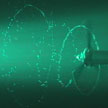 Steerable nanodevices are envisioned for a multitude of applications. For example, magnetic nanodevices can be controlled via external magnetic fields. So far, scientist mainly have used costly synthetic routes to design and synthesize such devices. Now, though, a team of scientists has shown that a very simple route based on solution chemistry can also lead to such steerable machines. So far, most nano-and microscale propeller designs have been based on a biomimetic approach. The new approach is based on random aggregates.
Steerable nanodevices are envisioned for a multitude of applications. For example, magnetic nanodevices can be controlled via external magnetic fields. So far, scientist mainly have used costly synthetic routes to design and synthesize such devices. Now, though, a team of scientists has shown that a very simple route based on solution chemistry can also lead to such steerable machines. So far, most nano-and microscale propeller designs have been based on a biomimetic approach. The new approach is based on random aggregates.
Nov 4th, 2013
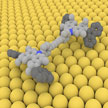 Designing, building, and running molecule-sized nanocars has become an active field of research among nanotechnology scientists. Based on research to reinvent the wheel for nanotechnology, efforts range from the original nano car developed by James Tour at Rice University in 2005 - which had buckyball wheels and flexible axles, and served as a proof-of-concept for the manufacture of machines at the nanoscale - to 'nanodragsters', and a nano car with molecular 4-wheel drive. A new Perspective article in ACS Nano describes how this field began, its growth, and list problems to be solved.
Designing, building, and running molecule-sized nanocars has become an active field of research among nanotechnology scientists. Based on research to reinvent the wheel for nanotechnology, efforts range from the original nano car developed by James Tour at Rice University in 2005 - which had buckyball wheels and flexible axles, and served as a proof-of-concept for the manufacture of machines at the nanoscale - to 'nanodragsters', and a nano car with molecular 4-wheel drive. A new Perspective article in ACS Nano describes how this field began, its growth, and list problems to be solved.
Jan 15th, 2013
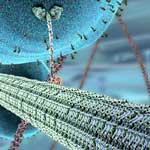 A look at what is happening in the field of artificial nanoscale motors and molecular machinery. These nanomachines could one day perform functions similar to the biological molecular motors found in living cells, things like transporting and assembling molecules, or facilitating chemical reactions by pumping protons through membranes. Researchers have reported a light-powered DNA locomotion device that is capable of autonomous and reversible motion along an oligonucleotide track. The direction of motion can be switched using different wavelengths of light. Compared with other reported DNA walkers, this new strategy not only preserves the autonomous and controllable movement but also provides a reusable track, making it feasible to reset the device after the complete trip, as observed in nature for kinesin and myosin.
A look at what is happening in the field of artificial nanoscale motors and molecular machinery. These nanomachines could one day perform functions similar to the biological molecular motors found in living cells, things like transporting and assembling molecules, or facilitating chemical reactions by pumping protons through membranes. Researchers have reported a light-powered DNA locomotion device that is capable of autonomous and reversible motion along an oligonucleotide track. The direction of motion can be switched using different wavelengths of light. Compared with other reported DNA walkers, this new strategy not only preserves the autonomous and controllable movement but also provides a reusable track, making it feasible to reset the device after the complete trip, as observed in nature for kinesin and myosin.
Sep 19th, 2012
 Most nanomotors designs are powered by quantum or, in most cases, catalytic chemical processes, the nanoscale equivalent of conventional internal heat engines that are so prevalent in our daily life has been missing. Researchers have now suggested a new type of ultrathin graphene engine which mimics an internal combustion engine system. This graphene engine consists of only a few parts - functionalized graphene, laser light, and substrate, which would make it simple to work with.
Most nanomotors designs are powered by quantum or, in most cases, catalytic chemical processes, the nanoscale equivalent of conventional internal heat engines that are so prevalent in our daily life has been missing. Researchers have now suggested a new type of ultrathin graphene engine which mimics an internal combustion engine system. This graphene engine consists of only a few parts - functionalized graphene, laser light, and substrate, which would make it simple to work with.
 Subscribe to our Nanotechnology Spotlight feed
Subscribe to our Nanotechnology Spotlight feed





